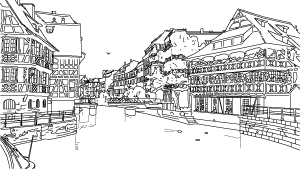|
| I am interested in many-body physics in two-dimensional electron systems (2DESs).
In particular, I investigate electron spin states in a quantum Hall system by resistively-detected nuclear magnetic resonance.
Recently, I started research on plasmon transport in GaAs/AlGaAs 2DESs or graphene using time-resolved transport measurement.
|
- Plasmon transport in graphene and GaAs/AlGaAs 2DESs
- Quantum Hall effect
- Bilayer quantum Hall state at nu=1
- Bilayer quantum Hall state at nu=2
- Bilayer quantum Hall state at nu=2/3
- Control of nuclear spins in semiconductors
- Other topics
 clear clear
- Observation of Bogoliubov excitations in exciton-polariton condensates
S. Utsunomiya, L. Tian, G. Roumpos, C. W. Lai, N. Kumada, T. Fujisawa, M. Kuwata-Gonokami, A. Loffler, S. Hofling, A. Forchel, and Y. Yamamoto
Nature Physics 4, 700 (2008).
Abstract--
Exciton-polaritons in a semiconductor microcavity, which are elementary excitations created by strong
coupling between quantum-well excitons and microcavity photons, were proposed as a new BEC candidate in solid-state
systems.
In this letter, we report the first observation of interaction effects
on the exciton-polariton condensate and the excitation spectra,
which are in quantitative agreement with the Bogoliubov theory.
- Boundary-mediated electron-electron interactions in quantum point contacts
V. T. Renard, O. A. Tkachenko, V. A. Tkachenko, T. Ota, N. Kumada, J-C Portal, and Y. Hirayama
Phys. Rev. Lett. 100, 186801 (2008).
Abstract--
An unusual increase of the conductance with temperature is observed in clean quantum point
contacts for conductances larger than 2e2/h. A model accounting for electron-electron interactions mediated by boundaries
(scattering on Friedel oscillations) qualitatively describes the observation.
- Coherent zero-state and pi-state in an exciton-polariton condensate array
C. W. Lai, N. Y. Kim, S. Utsunomiya, G. Roumpos, H. Deng, M. D. Fraser, T. Byrnes, P. Recher, N. Kumada, T. Fujisawa, and Y. Yamamoto
Nature 450, 529 (2007).
Abstract--
we report the observation of spontaneous build-up of in-phase (zero-state) and antiphase (pai-state) 'superfluid' states in an array of exciton-polariton condensates connected by weak periodic
potential barriers within a semiconductor microcavity.
These inphase and antiphase states reflect the band structure of the one-dimensional
polariton array and the dynamic characteristics of
metastable exciton-polariton condensates.
|
 |
|
|
|